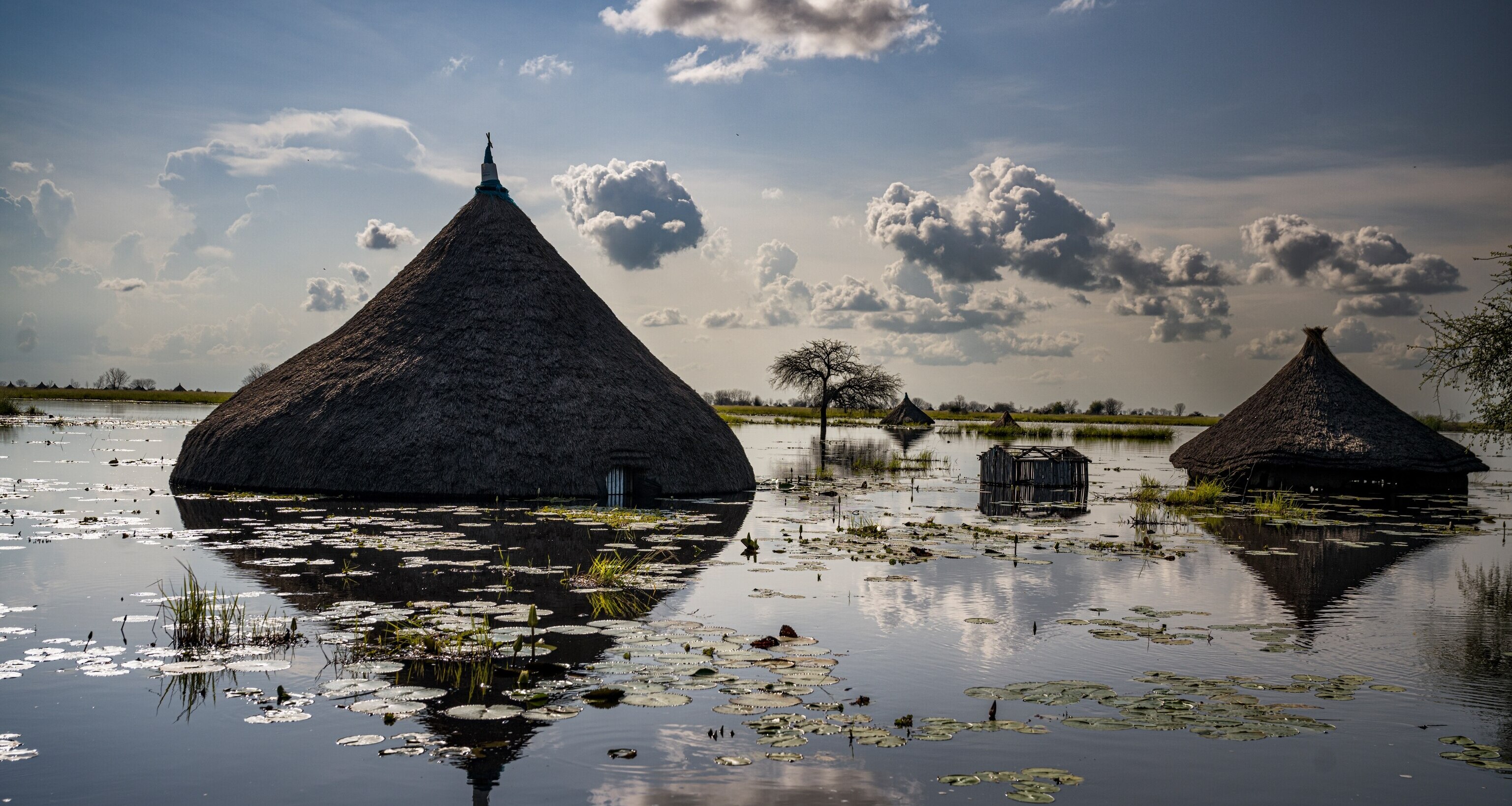
South Sudan, officially known as the Republic of South Sudan, is a landlocked country located in East-Central Africa. It gained independence from Sudan in 2011, making it the newest country in the world. With a population of approximately 11 million people, South Sudan is home to diverse ethnic groups and boasts a rich cultural heritage.
Despite its young history, South Sudan is a country that has faced numerous challenges, including political instability, ethnic conflicts, and economic hardships. However, it is also a land with immense potential, abundant natural resources, and breathtaking landscapes.
In this article, we will delve into 44 fascinating facts about South Sudan. From its unique wildlife and vibrant traditions to its struggle for peace and development, these facts will provide a comprehensive look into the history, culture, and current state of this remarkable country.
Key Takeaways:
- South Sudan gained independence in 2011, making it the youngest country in the world. Its diverse culture, rich wildlife, and challenging history make it a fascinating and evolving nation.
- With vast oil reserves, diverse ethnic groups, and a challenging political landscape, South Sudan is a land of immense potential and resilience, despite facing significant hurdles.
South Sudan gained independence in 2011.
After years of conflict, South Sudan officially became an independent country on July 9, 2011, following a referendum that resulted in an overwhelming majority in favor of separation from Sudan.
Juba is the capital and largest city of South Sudan.
Located on the banks of the White Nile, Juba serves as the political, economic, and cultural center of the country.
South Sudan is the youngest country in the world.
With its independence in 2011, South Sudan became the newest nation on the global map.
The official languages of South Sudan are English and Arabic.
English serves as the lingua franca, while Arabic remains an important language due to historical ties with Sudan.
The Nile River runs through South Sudan.
As the longest river in the world, the Nile plays a crucial role in the country’s geography and sustains a wealth of wildlife and vegetation.
South Sudan has a diverse ethnic composition.
The country is home to more than 60 ethnic groups, each with its own unique traditions, languages, and cultural practices.
The Dinka people are the largest ethnic group in South Sudan.
With a population of over 4 million, the Dinka people have a significant influence on the country’s cultural landscape.
South Sudan has vast oil reserves.
The country’s oil reserves are one of its most valuable natural resources, contributing to its economy.
The Sudd is the largest swamp in Africa and can be found in South Sudan.
Covering an area of approximately 30,000 square kilometers, the Sudd is a critical habitat for numerous species of birds, fish, and mammals.
South Sudan is known for its rich biodiversity.
From elephants and giraffes to hippos and chimpanzees, the country is home to a wide variety of wildlife.
The traditional dance of South Sudan is called the “Dinka dance.”
This energetic dance is characterized by vibrant movements and is often performed during celebrations and cultural events.
The Kidepo Valley National Park is a popular tourist destination.
Located in the eastern part of the country, this national park offers breathtaking landscapes, diverse wildlife, and opportunities for outdoor activities.
South Sudan has a challenging political and humanitarian situation.
The country has faced significant political instability and humanitarian crises since its independence, leading to displacement and a need for international assistance.
South Sudan experiences a tropical climate.
The country has a hot and humid climate, with distinct wet and dry seasons.
The official currency of South Sudan is the South Sudanese pound (SSP).
The currency was introduced after independence to replace the Sudanese pound.
South Sudan has a rich musical heritage.
Traditional music plays a vital role in cultural celebrations and storytelling, often accompanied by traditional instruments such as drums and harps.
The White Nile and the Blue Nile meet in Sudan, near the border with South Sudan.
This convergence point is known as the “Three Towns” and has historical significance for both countries.
South Sudan has a low literacy rate.
Education is a challenge in the country, with limited access to schools and a high dropout rate.
Agriculture is the primary source of livelihood for the majority of South Sudanese people.
Subsistence farming, livestock rearing, and fishing are crucial for sustenance and economic stability.
South Sudan has diverse traditional cuisines.
From staple foods like sorghum and millet to regional dishes like asida and bamia, the culinary scene reflects the country’s cultural diversity.
The Sudd elephant migration is a remarkable natural phenomenon in South Sudan.
Each year, thousands of elephants travel from Boma National Park to the Sudd swamp in search of water and vegetation.
The John Garang Memorial University of Science and Technology is the first public university in South Sudan.
Named after the country’s late leader, the university aims to provide quality education to students in various academic disciplines.
South Sudan has a rich oral tradition.
Storytelling and oral history passed down through generations are an integral part of the country’s cultural fabric.
The South Sudanese pound is among the least valuable currencies globally.
Challenges such as hyperinflation have led to a significant depreciation in the value of the currency.
The cattle culture is deeply rooted in South Sudanese society.
Cattle are highly prized and often seen as a symbol of wealth and prestige.
South Sudan has enormous potential for ecotourism.
With its pristine natural landscapes and diverse wildlife, the country has the opportunity to develop sustainable tourism initiatives.
The official religion of South Sudan is Christianity.
The majority of the population follows various Christian denominations.
Traditional ceremonies and rituals are an essential part of South Sudanese culture.
These rituals often involve music, dance, and symbolic representations of community values and beliefs.
South Sudan has a high maternal mortality rate.
Access to comprehensive healthcare services remains a challenge, particularly for expectant mothers.
The Jonglei Canal project is a controversial irrigation scheme in South Sudan.
Its implementation has raised concerns about the ecological impact on the region and displacement of local communities.
South Sudan has a significant number of refugees and internally displaced persons.
Ongoing conflicts have resulted in the displacement of millions of people.
The independence of South Sudan brought hope for a peaceful future.
However, the country has faced numerous challenges in achieving stability and development.
South Sudan has vast untapped natural resources.
Apart from oil, the country possesses minerals such as gold, copper, and uranium, attracting international interest in its potential for economic growth.
Traditional wrestling is a popular sport in South Sudan.
Wrestling matches, known as “lukayo,” are held as a form of entertainment and to showcase strength and agility.
The civil war in South Sudan has had a devastating impact on the country.
Violence and political instability have caused widespread suffering and hindered progress.
South Sudan has a significant number of child soldiers.
The ongoing conflict has led to the recruitment and use of children in armed groups, depriving them of their rights and childhood.
The national flag of South Sudan features three horizontal stripes of black, red, and green.
The black stripe represents the people of South Sudan, the red symbolizes the blood shed during the struggle for independence, and the green stands for the country’s agricultural resources.
South Sudan has a unique blend of traditional and modern architecture.
From traditional mud huts to modern buildings in urban centers, the architecture reflects the country’s cultural and historical influences.
The population density of South Sudan is relatively low.
Despite its large land area, the population is concentrated in certain areas, resulting in vast stretches of uninhabited landscapes.
The healthcare system in South Sudan faces significant challenges.
Access to quality healthcare services is limited, especially in rural areas, leading to high mortality rates and a high burden of preventable diseases.
The White Nile State in Sudan borders South Sudan and has historical significance.
It was the site where the British and French expeditions explored the origin of the Nile River.
The diverse cultures of South Sudan contribute to a vibrant and enriching society.
The country’s cultural heritage is celebrated through music, dance, art, and traditional festivities.
The United Nations Mission in South Sudan (UNMISS) plays a vital role in peacekeeping efforts.
Since its establishment in 2011, UNMISS has supported the country’s peace process and provided assistance to communities affected by conflict.
South Sudan is a land of immense potential and resilience.
Despite the challenges it faces, the spirit of its people and the richness of its culture make South Sudan a country with a promising future.
There you have it, 44 fascinating facts about South Sudan! From its history and culture to its natural wonders and challenges, South Sudan is a country that continues to evolve and captivate the imagination. Explore its vibrant landscapes, immerse yourself in its diverse cultures, and witness the indomitable spirit of its people.
Conclusion
South Sudan is a fascinating country with a rich history, diverse culture, and breathtaking natural beauty. From its struggle for independence to its vibrant traditions and unique traditions, there is so much to learn and discover about this young nation. With its vast wildlife reserves, beautiful landscapes, and warm and welcoming people, South Sudan offers a truly unique experience for travelers and explorers.
As South Sudan continues to grow and develop, it remains a place of great potential and opportunity. Whether you are interested in its history, natural wonders, or cultural traditions, South Sudan has something to offer everyone. So pack your bags and embark on an adventure to explore the untapped beauty and hidden gems of this extraordinary country.
FAQs
1. What is the population of South Sudan?
The estimated population of South Sudan is around 11 million people.
2. What languages are spoken in South Sudan?
The official language of South Sudan is English, but there are over 60 indigenous languages spoken in the country.
3. Is South Sudan a safe country to visit?
It is recommended to check the current travel advisories before visiting South Sudan. There are certain regions with security risks, but many areas are safe for tourists.
4. What is the currency of South Sudan?
The currency of South Sudan is the South Sudanese Pound (SSP).
5. What are some popular tourist attractions in South Sudan?
Some popular tourist attractions in South Sudan include Boma National Park, Nimule National Park, the Sudd Wetland, and the White Nile.
6. How do I get to South Sudan?
You can reach South Sudan by air through Juba International Airport, which is the main international airport in the country. There are also land border crossings from neighboring countries.
South Sudan's captivating history, vibrant culture, and breathtaking landscapes offer endless opportunities for exploration. From the inspiring story of Emmanuel Jal to the rich tapestry of Sudanese heritage, there's so much more to discover. Luol Deng's remarkable journey adds another layer of fascination to this incredible region. Immerse yourself in the wonders of South Sudan and its surrounding areas, where every fact uncovers a new facet of this extraordinary part of the world.
Was this page helpful?
Our commitment to delivering trustworthy and engaging content is at the heart of what we do. Each fact on our site is contributed by real users like you, bringing a wealth of diverse insights and information. To ensure the highest standards of accuracy and reliability, our dedicated editors meticulously review each submission. This process guarantees that the facts we share are not only fascinating but also credible. Trust in our commitment to quality and authenticity as you explore and learn with us.


